There is an old marketing slogan used by florists worldwide that has been in use for years: “Say it with Flowers!” The carrier-equipped navies of the world have a better way to express sympathy, love, admiration, pride, patriotism, and commemoration—they SAY IT WITH SAILORS!
The following story was written by Dave O’Malley and originally appeared on the Vintage Wings of Canada website.
The flight deck of an aircraft carrier is perhaps the most dangerous place on earth to work. The Navy ratings who work there risk death in any number of ways—propeller strikes, engine intake ingestion, ordnance explosion, fuel fire, arrestor cables removing limbs, aircraft losing control, and on and on. Every few minutes a 35,000-pound airplane literally crashes to the deck, airplanes are moving, and propeller discs are threatening decapitation or de-limbing. People are everywhere. Flame, heat, deafening noise, fumes, toxins, and danger are omnipresent. On top of all this are layered high winds, driving rain, a heaving deck, and even the dark of night. It’s not the place to be if you are preoccupied with something other than the one part you have in this choreographed mayhem. It’s not the place to be if you are not aware of your surroundings.
So why, then, is it that the aircraft carrier’s flight deck can also become a thousand-foot-long, thousand sailors-strong, sentimental Hallmark greeting card? How can the most dangerous working environment also be the same place where a crew can send a message to a little boy dying of cancer, or birthday greetings to a Queen, or even just let their mothers know they are thinking of them? I am speaking of the long-entrenched and truly weird practice of the aircraft carrier spell-out. TimnDubé, military historian and former Navy cadet, explains the history of the spell-out: “This is an evolution of the custom of ‘manning the rails,’ itself an evolution of ‘manning the yards’ when sailors would climb the masts and position themselves along the spars or yards to render honors. It’s also done as a form of honor when entering a harbor to show no hostile intent—if you are manning the rails, you can’t be manning the guns. With aircraft carriers not really having rails, it would make sense to ‘say it with sailors,’ particularly if there was a bridge to pass under like the Golden Gate Bridge at San Francisco.”
The art of arranging large groups of sailors on the deck of an aircraft carrier is a practice long entrenched in the world of carrier operations. It is not known when this practice began, but a recent article on the Smithsonian’s Air & Space website suggested it may have started around the end of the Second World War. To be fair, they admitted it may have been earlier, but they were not sure. In my quest to find photographs of aircraft carrier flight deck spell-outs, I came across one photograph of the USS Lexington (CV-2) with her decks cleared of aircraft and a few hundred of her sailors turned out in dress whites and lined up quite artistically to spell-out the word NAVY. I probably will never know if this is the first example of a spell-out on a carrier deck, but the date is nearly ten years before the end of the war—1936 to be exact. The early date and the fact that they are spelling out perhaps the most simple of all words a navy crew could spell (NAVY) leads me to postulate that this may be one of the first deck spell-outs.
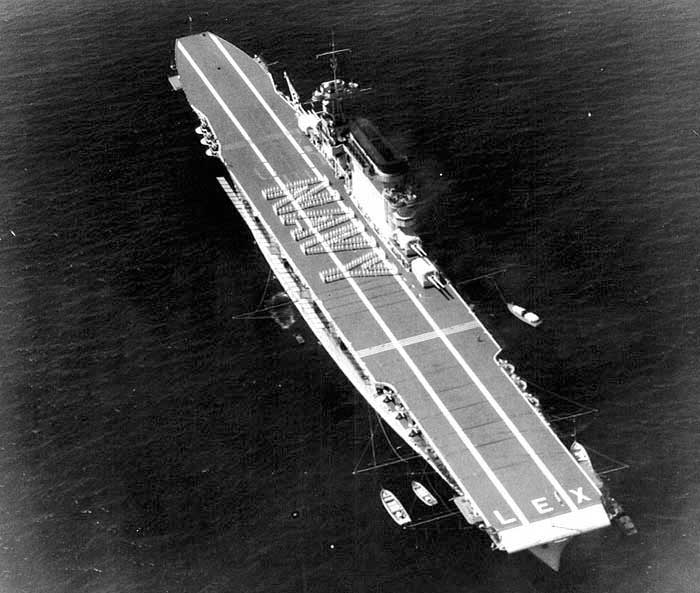
The practice has come a long way sincenthen. Today, it is a tradition that every carrier in the US Navy, and indeed innmost aircraft carrier-equipped navies of the world, carries out. The first timenit was thought of, I can imagine the Captain of the ship (let’s just say it was Lexington)nthinking to himself, “I’ve got a floating parade ground 888 feet long and 107nfeet wide. I have 2,800 bored sailors and airmen. I have a ship’s photographernand any number of aircraft that can climb above this deck. What can I do toncreate a photo that will get attention for the Lady Lex, the Navy and myncrew?” My guess is it went something like that but now, nearly 80 years later,nit is a tradition practiced by every crew of every aircraft carrier in everynnavy. Even the submariners are doing it… but one can imagine the limitationsna submarine forces on creativity. Not so the carrier.
In the 1930s, as it still is today, thenaircraft carrier was the height of technology, a magnet for the press,npoliticians, the curious, the young ladies and the young men of America. Just asnsoon as the first flight deck spell-out photo was taken, there is no doubt thatnit appeared in Navy magazines like “All Hands” and was a huge hit with localnand national newspapers. Copying the idea was guaranteed to happen. By war’snend, carriers returning home were sending flight deck spell-out messages tontheir home ports or new ports of call.
My earliest memory of seeing a carrier flight deck spell-out was the now famous image of America’s first nuclear-powered carrier and her attendant nuclear powered task force steaming together at high speed across the ocean with the massive deck of USS Enterprise hosting a thousand or more sailors in brilliant white uniforms formed up to spell out E=mc2, the famous mass-energy equivalence formula, first proposed by Albert Einstein and considered a fundamental formula of the Nuclear Age. Alongside steamed two other ships of the line that were also powered by the atom—USS Long Beach and USS Bainbridge. The ships were demonstrating the capabilities on the new Navy by circumnavigating the planet without refuelling. Enterprise’s deck was immense, the aircraft—Vigilantes, Crusaders and Skyhawks—were all arranged in an artistic arrowhead design. The formation of the letters and number was perfection. The sun was shining. It blew my mind.
Over the past few months, I had beennresearching a couple of stories about aircraft carriers and began to comenacross many photographs of this strangely compelling practice of getting ship’sncrews to form letters on the decks to send messages to people on shore. Instarted collecting them in a folder. Then I came across a page on Wikipedianwhere someone had collected scores of these photographs in one place, many ofnwhich I had in my folder. These photos also had US Navy press release-stylencaptions attached, indicating that the media or public affairs people of the USnNavy often got involved in these spell-outs… at least after the fact.
I also went repeatedly to a site called navsource.org, an excellent unofficial website which has collected statistics, cruise logs, photographs and anecdotes of nearly every ship ever to sail with the United States Navy. It is an astonishing collection of information and images and certainly one of the better, if not the best, site of this type I have found. I highly recommend a visit to the site, as it will draw you in for hours on end.
Scouring the entries for every aircraftncarrier, I found many fine examples of the spell-out. I also noticed a fewnthings. Escort carriers rarely were the canvas for a spell-out. Spell-outs onndecks devoid of aircraft are not nearly as impressive as ones with aircraft.nSome were exquisitely perfect, while others were remarkably sloppy. Somencarriers were more active in the practice than others. The one thing that wasncommon to all of these images was the clear message of pride in one’s ship andnone’s navy.
Here now, for your enjoyment, are only somenof the many photographs of aircraft carrier spell-outs I was able to discovernover the past year.
There is an old marketing slogan used bynflorists worldwide that has been in use for years: “Say it with Flowers!” Thencarrier-equipped navies of the world have a better way to express sympathy,nlove, admiration, pride, patriotism and commemoration—they SAY IT WITH SAILORS!
n
nDave O’Malley, with thanks to Navsource.org and Kevin Nesdoly
The Port Of Call Shout-Out
For me, the greatest and mostnpowerful of the great carrier flight deck spell-outs are those that give anmassive shout-out to the ports of call they are arriving at or departing from.nThey are crowd favourites indeed. Like a rock star who shouts out “Hey Ottawa!nWe’re happy to be here tonight!” or “Hey Des Moines! Those Iowa girls are thencutest!” or “What’s up Green Bay, how about them Packers?” a carrier shout-outnis never interpreted as manipulative and is always embraced by the community.nOften the carrier creates the spell-out while approaching the city, passingnunder her bridges, below her lofty buildings. This is designed to get as muchnattention as possible… perhaps to get the word out to the pretty girls.
The ship usually puts up their own aircraftnor helicopter, but sometimes newspaper photographers will take their ownnphotographs from a bridge or high point. Regardless, the photographs are soonnto appear in the port’s daily newspapers and, more often than not, are pickednup in others across the country.
Here, starting with some good old hometownnCanadian shout-outs, are some of the finest I could find on God’s gift to thencurious—the internet.

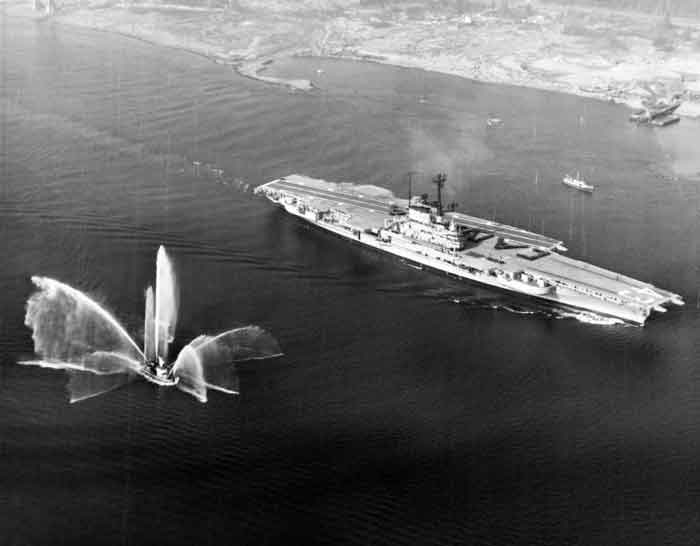
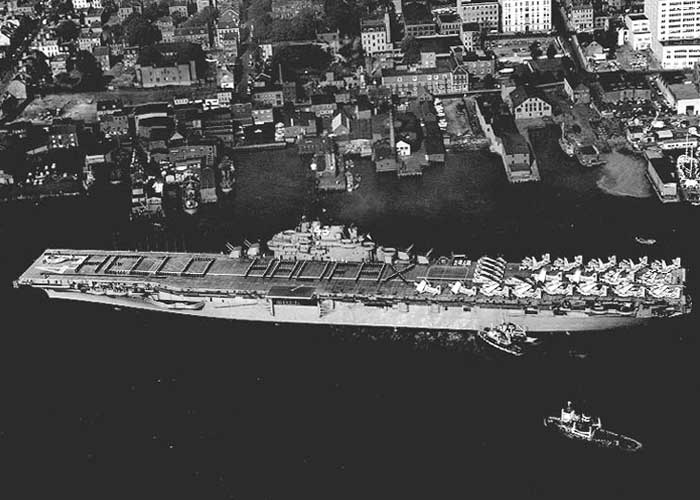


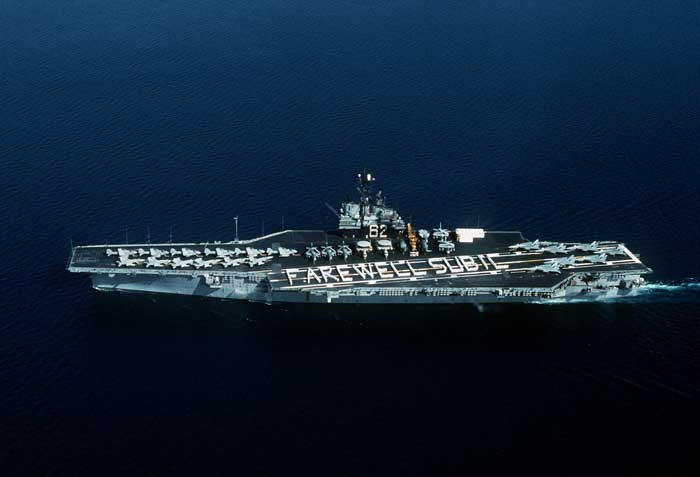
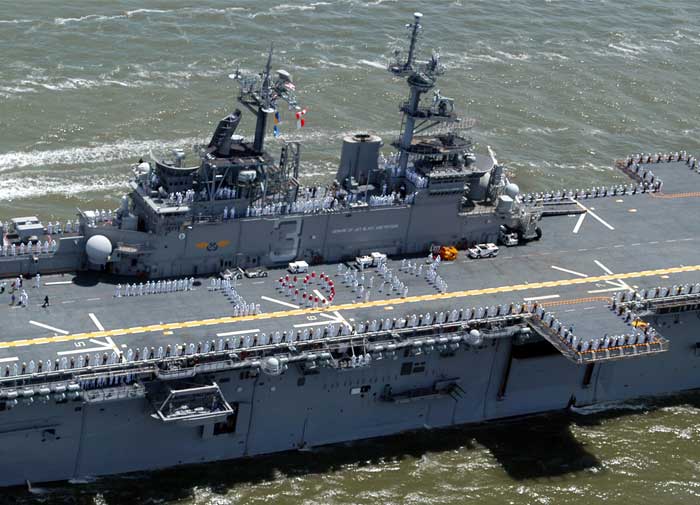
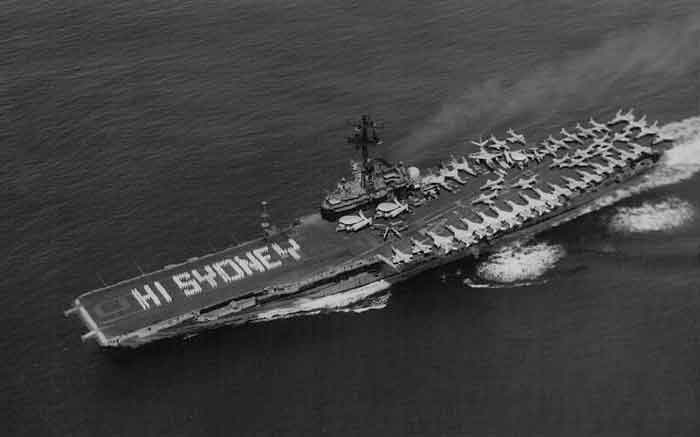
We Speak Your Language.
Not all spell-outs are written in thenalphabet or language that we Westerners think is the only one. In fact, if younwant your 1,000 sailor message to be understood in Yokosuka, Athens ornBrunsbüttel Roads, you best form it up in the language and even the alphabet ofnthe girls you want to impress. Sometimes, you want to transliterate the messagenso that both sides can understand what is being said… SAYONARA for instancenwas used a number of times by carriers heading home from duty in Japanesenwaters. And then, if you happen to be a Chinese or Indian aircraft carrierncrew… spell it your way!

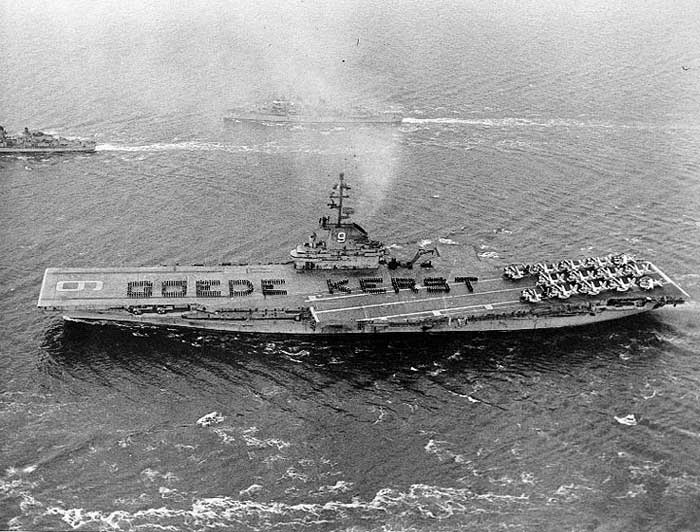



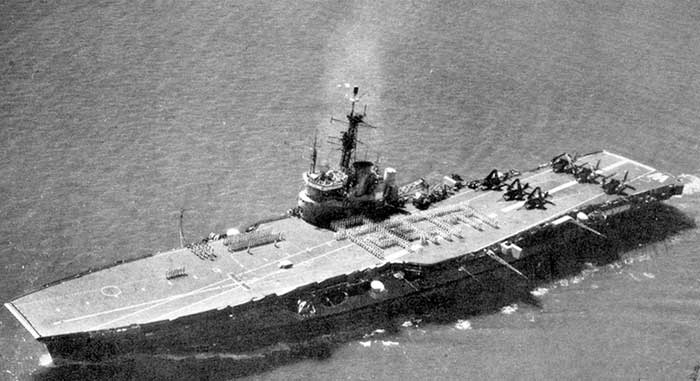
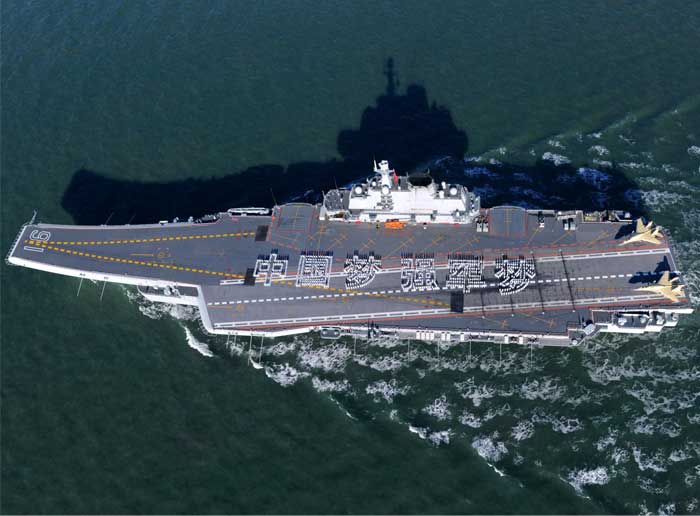

Ain’t Too Proud to Brag or Commemorate an Anniversary
One of the only ways a crew member of anfamous carrier can show proof of his part in an accomplishment such as anquarter million deck landings is by assembling with his mates on deck and spellingnit out for the world to see and for a ship’s photographer to capture. Whethernit’s an anniversary, a milestone, an award, a pile of awards or final ride intonthe sunset, the flight deck spell-out photo is the finest take-home a sailorncan receive.
Throughout North America and Europe, therenare hundreds of thousands of family albums with faded or discolourednphotographs showing a deck full of sailors in some alphanumerical message, andnbeneath may be a handwritten note: “Dad is in the letter ‘X’ of BOXER.” For allnthose exceptional men and women on carriers who “Ain’t Too Proud to Brag,” herenis a selection of some of the finest I found on the web.


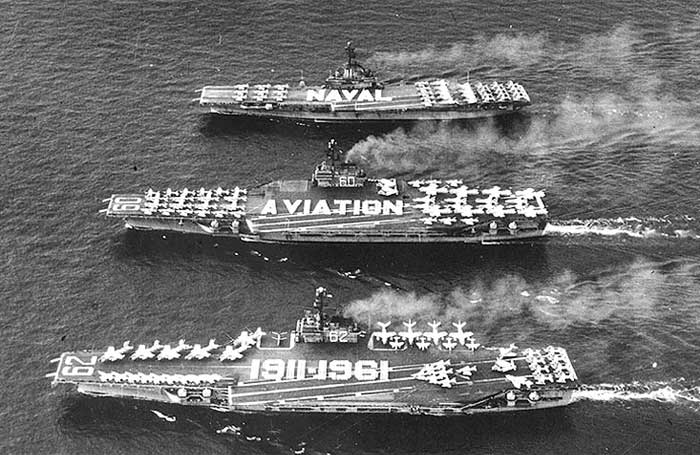
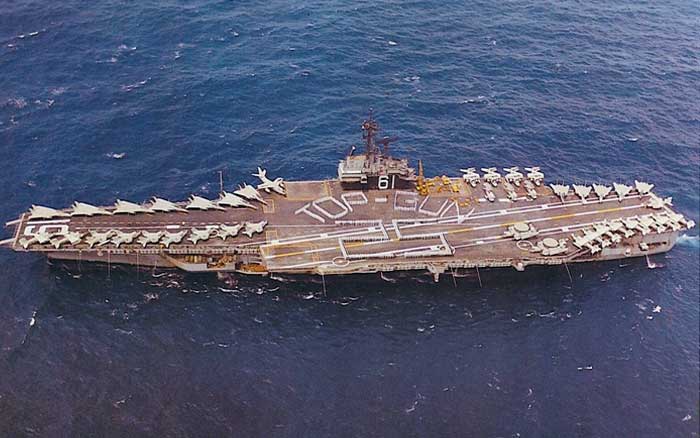

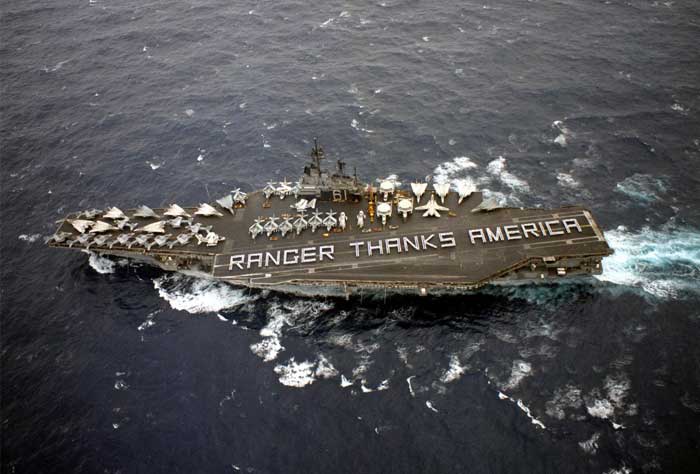
“Dear Abby: For most of us, the Christmas season is a joyous time, but for the thousands of American servicemen and women stationed abroad and at sea, it can be depressing and lonely.
As the national chairman of 1987, America Remembers Campaign, I want to encourage the folks at home to send Christmas and Hanukkah cards and letters to servicemen and women who are far from home. Last year, through Operation Dear Abby II, your readers flooded the mail with more than 2 million pieces of mail, which we distributed to our troops.
Abby, I spent Christmas in Germany with American GIs who received mail from Operation Dear Abby II, and I wish you and your readers could have seen the smiles and tears as the mail was distributed on Christmas Eve! This year, we need your help more than ever. We want our servicemen and women to know that the folks back home remember and support them. Can the troops count on you and your readers for Operation Dear Abby III? Please say yes.”Photo: US Navy via navsource.org


How do You Spell Ship’s Pride?
The deck spell-out was made for sailorsnwanting to tell the world about their ship and its accomplishments, itsncomebacks, its patriotism and its nickname. When a deck spell-out uses the namenof the ship these days, it is likely that the image will be shared with thenentire crew so that they may send it to family members via e-mail. In days gonenby, the spell-out photo would have been printed at cruise’s end and handed outnor used for a ship’s postcard or even Christmas card.
Here, for your enjoyment, is a selection ofncarrier deck spell-outs over the decades, from nuclear-powered super-carrier tonescort carrier. Some are perfectly formed, others… well, let’s just saynpenmanship is not everyone’s forte. One thing that is common to all, however,nis the powerful sense of belonging.
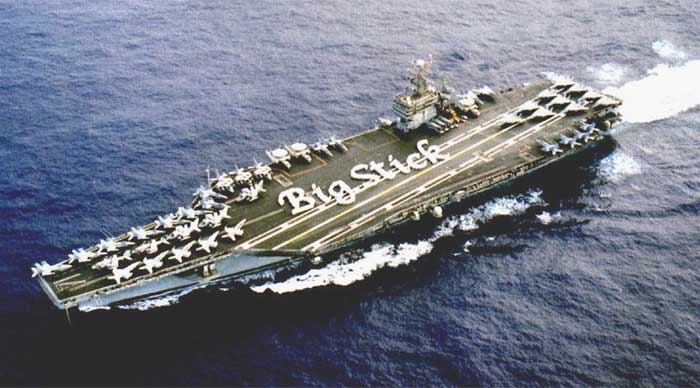
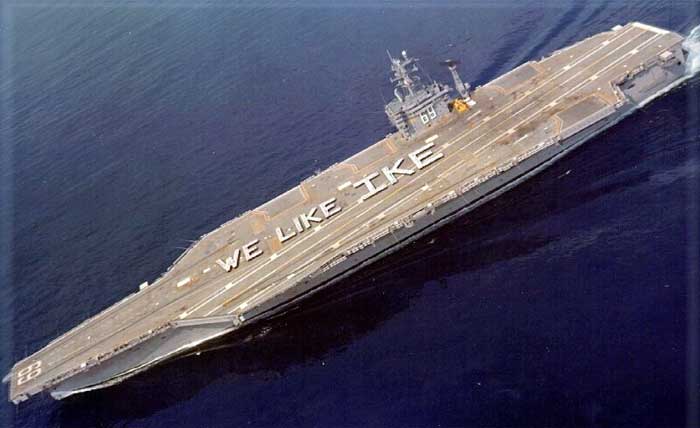

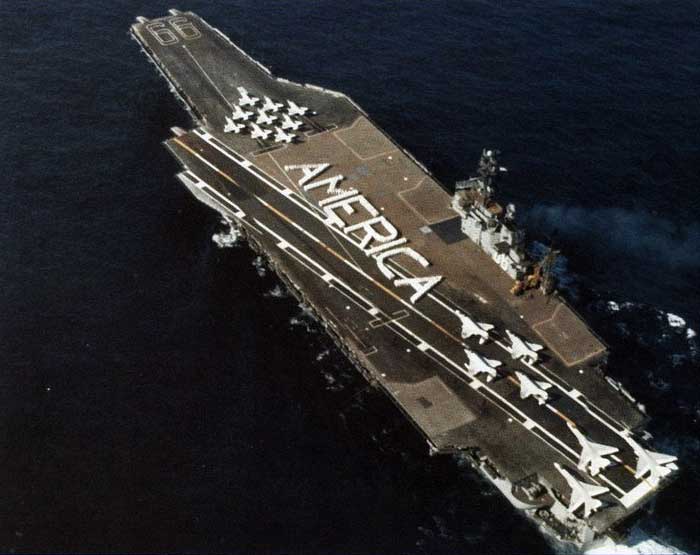

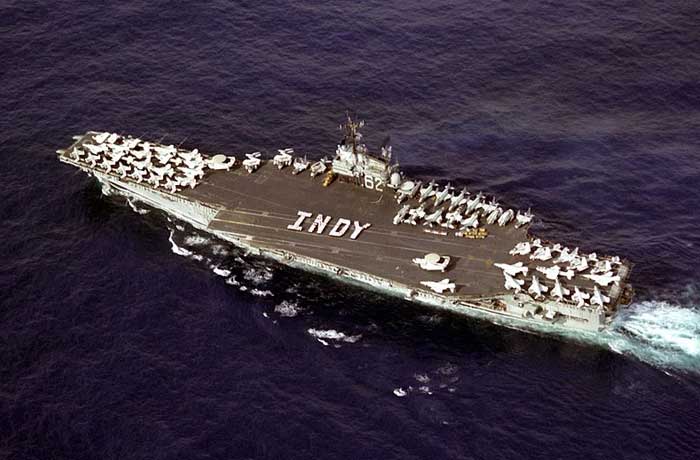
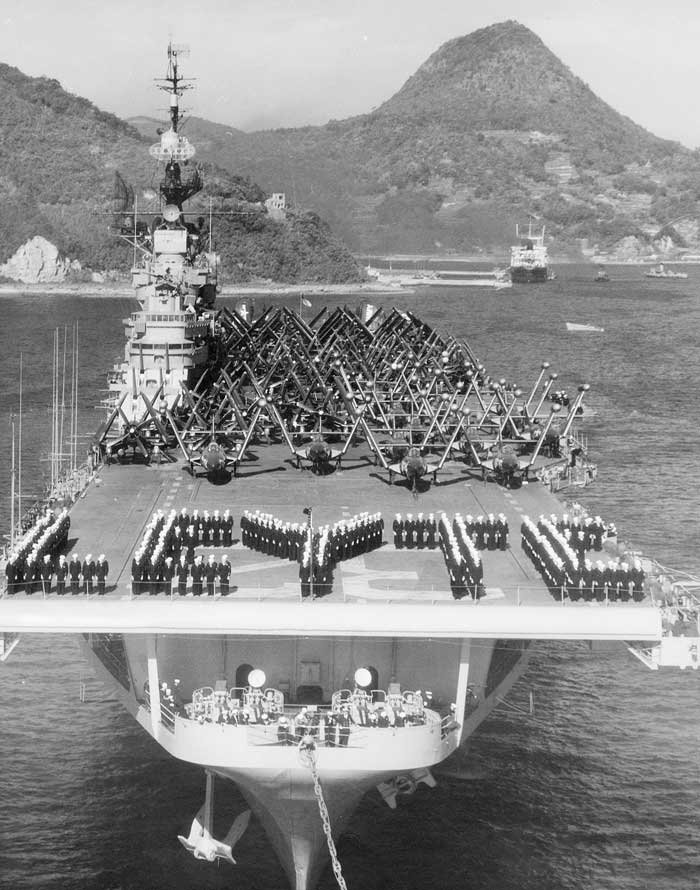
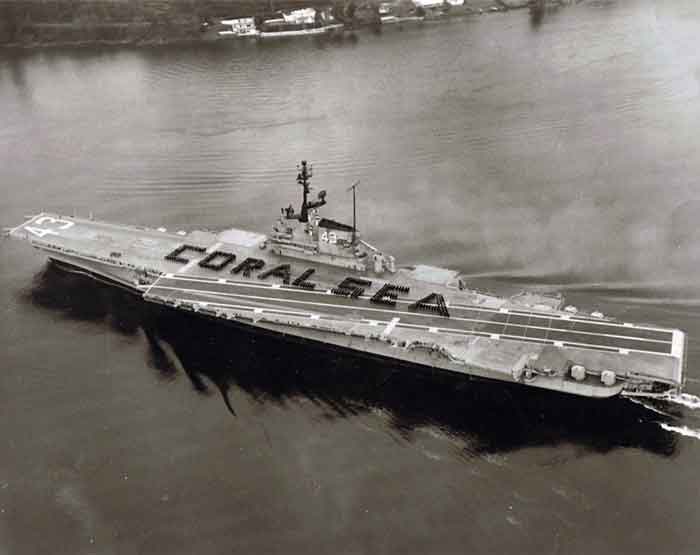
Seasonal Greetings

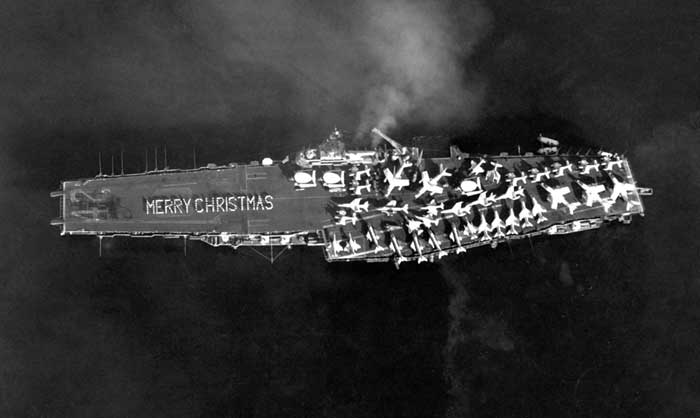
The Sporting Spell-Out
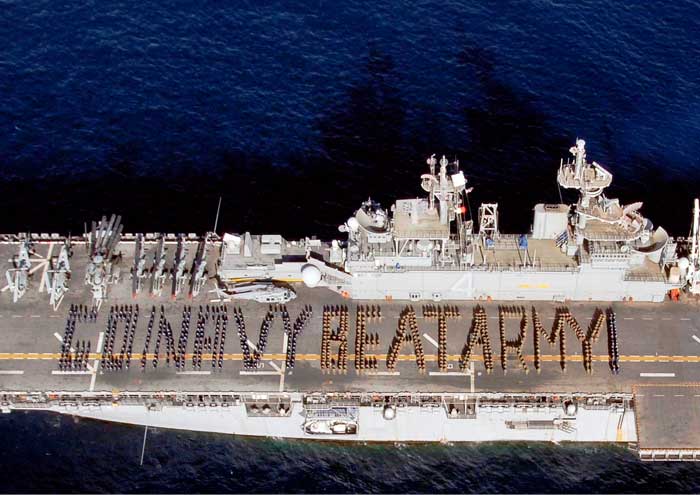
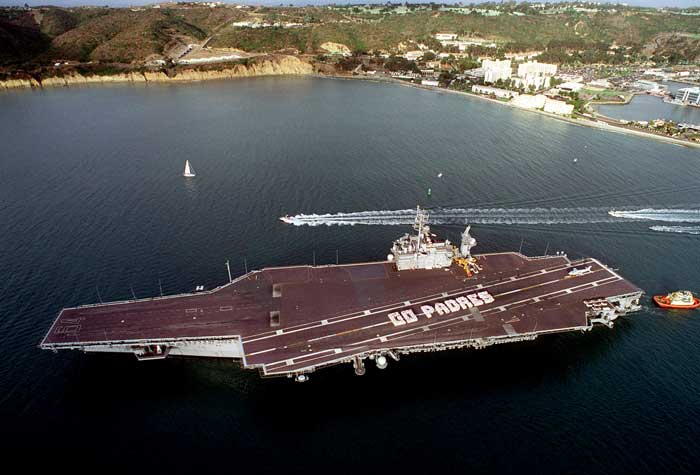
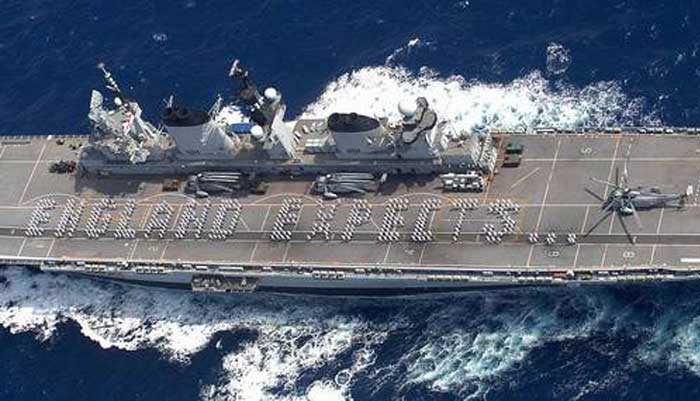
Any Reason is a Good Reason



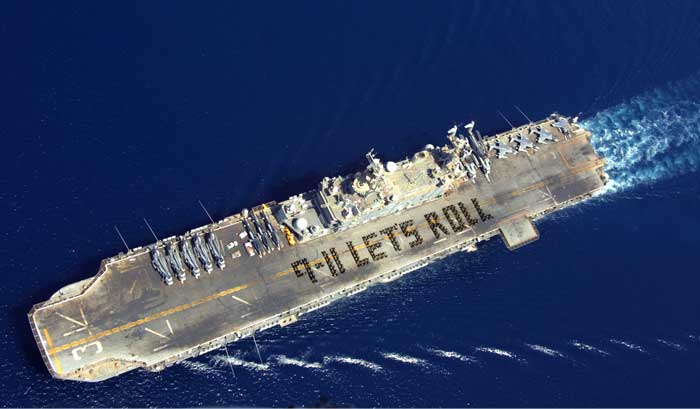

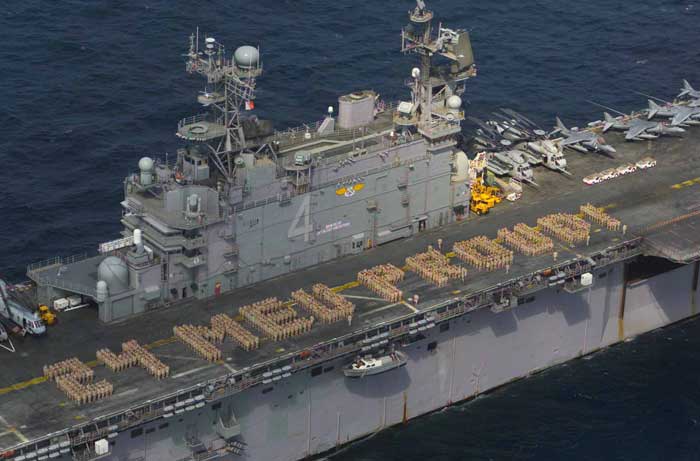
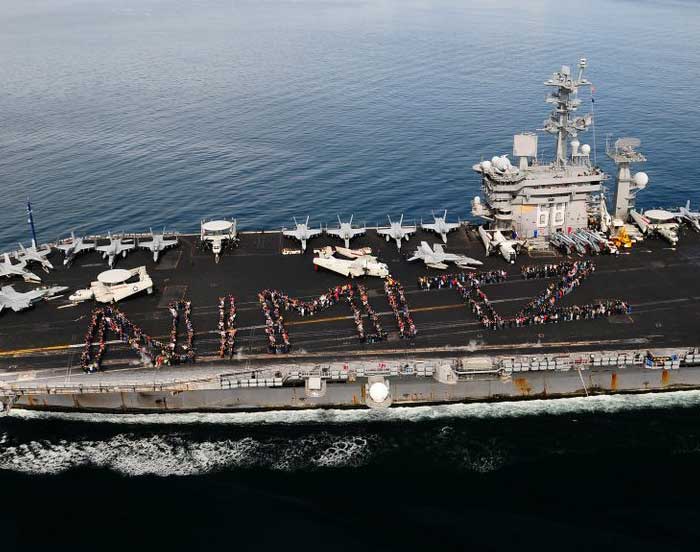
Special thanks to Dave O’Malleynof Vintage Wings of Canada.

